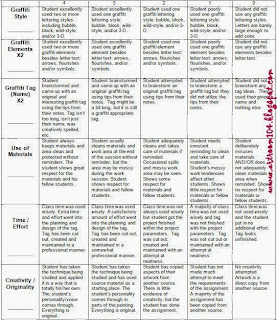So here is what this sheet is comprised of. As usual, you can head over to the SmARTteacher website and download the file to use.
Art Criticism:
Description
Write a credit line
for your artwork:
Title:
___________________________________________________________________ (1 pt.)
Artist: __________________________________________________________________
(1 pt.)
Date:
___________________________________________________________________ (1 pt.)
Medium:
________________________________________________________________ (1 pt.)
Size:
____________________________________________________________________ (1 pt.)
What type of medium is your artwork (1 pt.)? (Circle the medium)
Drawing Painting
Sculpture Ceramics
Printmaking Photography Digital Media Mixed Media
Art Criticism: Analysis
Check the elements
and principles you used in your artwork.
Describe where you used them. (10 pts.)
In this section, I have a checklist of the elements and principles for students to choose from. They must check off which ones they used and explain how and where they used them.
Art Criticism: Interpretation
1.
What is the subject matter of your artwork? _____________________________________________
(1 pt.)
2.
What is the subject genre of
your artwork (1 pt.)? (Circle the genre)
Portrait Landscape (Nature) Still Life History (Religious, cultural, etc.) Genre (everyday life)
3.
Is your artwork based on the art of a famous artist? ____________________________________
(1 pt.)
4.
What art style is your
artwork created in? ______________________________________________ (1 pt.)
Is there any symbolism in your artwork? (5 pts.)
What is your artwork about? (5 pts.)
How does your artwork reflect the learning objectives given to you on the project rubric? (5 pts.)
Art Criticism:
Reflection & Judgment
What are two (2)
things you think you did really well on this project and why? (5 pts.)
What is one (1) thing you’d like to improve/change about your artwork?
How would you change it? (5 pts.)
Did you like this project assignment?
Why or why not? (5 pts.)
0…no experience ~ 3…somewhat confident ~
5…could teach someone else
Experience level
with this medium before
project: 0 1 2 3 4 5
Familiarity with
subject/art style before project: 0 1 2 3 4 5
How comfortable do
you feel with this medium after the
project? 0 1 2 3 4 5
How familiar do you
feel with the art subject/style after
the project? 0 1 2 3 4 5
The last part where students need to rate themselves out of 5 is a really great way to incorporate that Marzano scale I use in the elementary. Even in the high school end we are supposed to be asking students to show us daily how they feel they are doing on a project to check for understanding. I have a really hard time with this because I know they wouldn't be serious about it if I asked them to "show me using your fingers" (or I'd get a bunch of obscene gestures!), so I think this will help them be a little more serious about reflecting on their projects.
I plan to use this on Monday first thing. Originally we were going to start the printmaking notes, but there are still handful of students who need to finish their superhero paintings, so this will be a good wrap-up for everyone as they finish their paintings.



















































